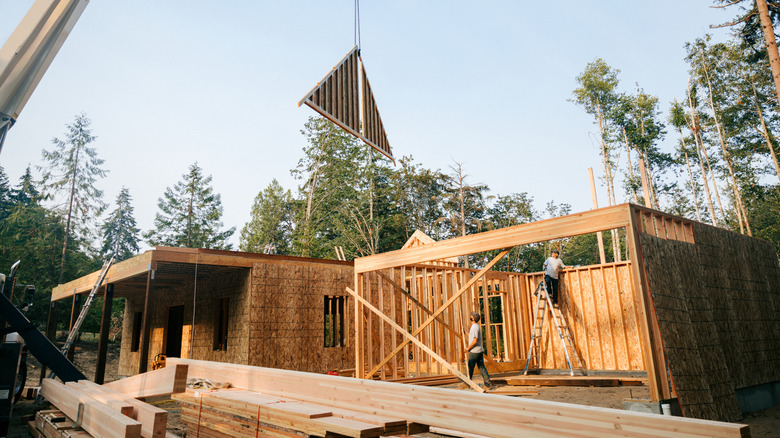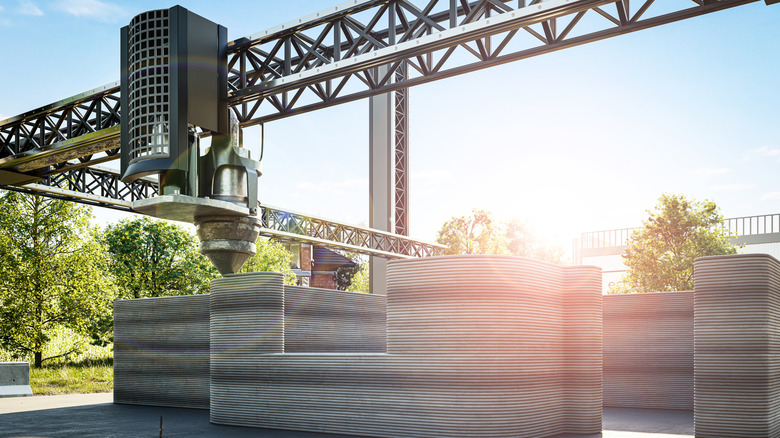Is Construction Robotics The Future Of Home Building? Here's What To Know
Chances are, you've seen a sci-fi movie where futuristic robots take over daily tasks from cooking and cleaning to even policing the streets. While this may not be part of everyday life just yet, one area where robots are starting to gain traction is the home-building industry. Involving robots in construction isn't new, but the technology has been evolving, becoming more advanced — and more impressive. One robot that has recently come on the scene is even capable of 3D printing and building an entire house. While it's still in the research and development phase, this machine, and others like it, could be game-changers for the future of homebuilding.
There are various challenges when it comes to home building, first and foremost, a shortage of skilled workers to get the jobs done. Even when there are enough workers on a job site, there are other issues to contend with, including work safety, efficiency, consistency, and excess waste. That's where robots come in. Robots can get the jobs done quicker, with greater precision, and with far fewer workers — and the semi-autonomous robot Charlotte is designed to do exactly that.
With its giant spider-like frame that lets it easily crawl around a construction site and adjust its height as needed, Charlotte can 3D print homes, like a 2,150-square-foot house, in a single day. As an added plus, the machine is also touted as a low-carbon solution as it uses locally sourced, eco-friendly building materials such as sand, waste glass, and crushed brick — eliminating much of the waste generated by traditional construction practices.
Robots could be a game changer for the housebuilding industry
"The building materials that we use today, even a simple brick, has so many processes involved and some of them very, very carbon intensive," Jan Golembiewski, co-founder of Earthbuilt Technology, which partnered with Crest Robotics to create Charlotte, told ABC News. "Earthbuilt takes all of that process and puts it into one single machine, one single process," he said, adding, "Raw materials go in and walls come out, and that cuts out all the costs and all the carbon." While Charlotte's nimble design and environmentally friendly process has been turning heads in the industry, it's certainly not the only player in the space.
Several machines are already making strides in automating the building process. There are various 3D home printers on the market, most of which use large gantry systems that dispense a concrete mixture in layers to form walls, while other robots are designed to tackle specialized homebuilding tasks, such as laying bricks, placing rebar, finishing drywall, and erecting scaffolding.
While the construction industry still has a way to go before robotic construction becomes mainstream, these innovations are on the right path to solving the ongoing housing crisis needing alternatives, which has been plagued by a shortage of affordable housing due to the lack of workers, labor inefficiency, safety concerns, and unsustainable building practices.

